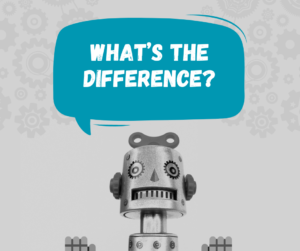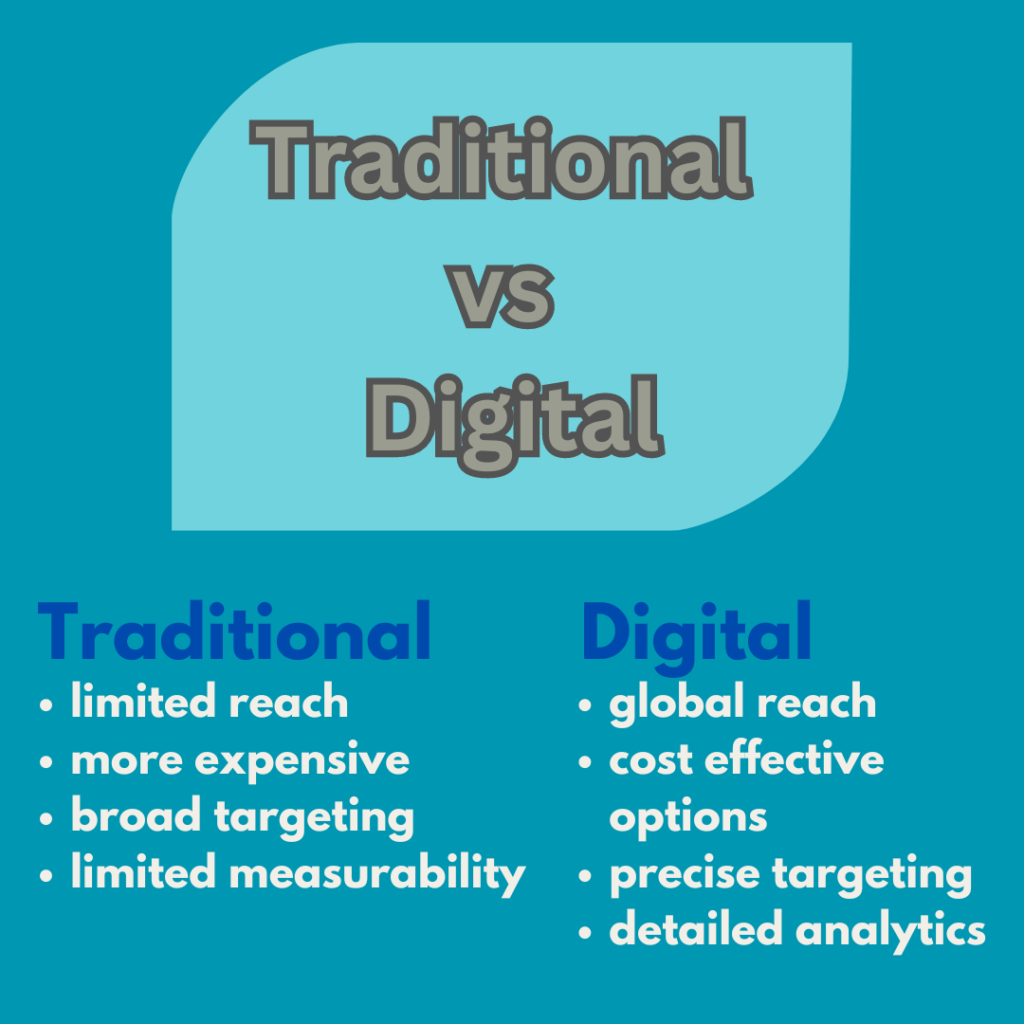In today’s business environment, navigating through various marketing strategies is crucial. With the explosion of digital opportunities, finding the right marketing approach can be overwhelming. That’s why I’m here to simplify it for you, focusing on the two powerhouses: digital marketing and traditional marketing. In this blog post, I’ll be your guide, breaking down both methods to reveal the perfect fit for your business.

What is Traditional Marketing?
Let’s take a step back and appreciate the timeless charm of traditional marketing. Think about flipping through the crisp pages of newspapers and magazines, seeing colorful print ads. Imagine driving past those iconic billboards, leaving a lasting impression on your daily journey. Recall the cozy evenings spent with family, the TV or radio commercials providing a familiar jingle to your moments. Even the excitement of checking the mailbox for something special – all elements of traditional marketing, reaching out through those offline channels to personally connect with you.
In advertising traditions, traditional marketing holds its own, combining familiarity with experiences into each campaign.
What is Digital Marketing?
Now, let’s shift our focus to the modern marvel – digital marketing. It’s like having a bustling marketplace at your fingertips, where every click, like, and share opens up a world of possibilities.
Imagine your business soaring to the top of search results, thanks to the magic of search engine optimization (SEO). Picture your brand becoming a familiar face in the landscape of social media, engaging with your community through likes, comments, and shares. Envision your story unfolding through captivating content, reaching hearts and minds on the internet. Feel the power of direct communication with your audience through personalized emails, and let influencers sprinkle a touch of stardust on your brand. And when you want to make a fast impact, there’s pay-per-click (PPC) advertising, ensuring your message reaches the right eyes at the right time.
Digital marketing is your business’s passport to the digital universe, leveraging the internet and its platforms to create meaningful connections with potential customers. It’s not just a strategy; it’s where your brand shines in the spotlight, capturing attention, and leaving a lasting impression.


Which Approach is Right for Your Business?
Choosing between digital marketing and traditional marketing depends on things like target audience, budget, goals, and industry. Traditional marketing is still very popular in certain industries and demographics, but digital marketing is constantly growing in today’s digital landscape.
If you are targeting a younger audience or have a limited budget, digital marketing may be the way to go. It lets you to reach a wider audience at a fraction of the cost compared to traditional marketing. It also allows you to measure and track your marketing campaigns in real-time allowing you to pivot and change tactics if needed.
A well-rounded marketing strategy often includes a combination of both digital and traditional marketing. By leveraging the strengths of each approach, businesses can maximize their reach and impact.
Which To Choose?
Traditional marketing still has its place in the marketing world, but digital marketing has become a key part of any successful marketing strategy. Its ability to reach a global audience, cost-effectiveness, precise targeting, and interactivity make it a powerful tool for businesses of all sizes.
Ultimately, the choice between digital marketing and traditional marketing depends on your specific business needs and goals. It’s important to evaluate your target audience, budget, and industry to determine the most effective marketing approach for your business.
Remember, marketing is not a one-size-fits-all solution. It’s essential to adapt and evolve your marketing strategies based on the ever-changing consumer behavior and technological advancements.



